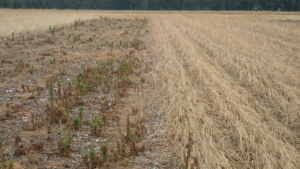
Gearing Up for Cover Crops: Consider Weed Management Benefits
Before procuring your cover crop seed for planting this fall, please watch the video below on the potential weed …


El inglés es el idioma de control de esta página. En la medida en que haya algún conflicto entre la traducción al inglés y la traducción, el inglés prevalece.
Al hacer clic en el enlace de traducción se activa un servicio de traducción gratuito para convertir la página al español. Al igual que con cualquier traducción por Internet, la conversión no es sensible al contexto y puede que no traduzca el texto en su significado original. NC State Extension no garantiza la exactitud del texto traducido. Por favor, tenga en cuenta que algunas aplicaciones y/o servicios pueden no funcionar como se espera cuando se traducen.
Inglês é o idioma de controle desta página. Na medida que haja algum conflito entre o texto original em Inglês e a tradução, o Inglês prevalece.
Ao clicar no link de tradução, um serviço gratuito de tradução será ativado para converter a página para o Português. Como em qualquer tradução pela internet, a conversão não é sensivel ao contexto e pode não ocorrer a tradução para o significado orginal. O serviço de Extensão da Carolina do Norte (NC State Extension) não garante a exatidão do texto traduzido. Por favor, observe que algumas funções ou serviços podem não funcionar como esperado após a tradução.
English is the controlling language of this page. To the extent there is any conflict between the English text and the translation, English controls.
Clicking on the translation link activates a free translation service to convert the page to Spanish. As with any Internet translation, the conversion is not context-sensitive and may not translate the text to its original meaning. NC State Extension does not guarantee the accuracy of the translated text. Please note that some applications and/or services may not function as expected when translated.
Collapse ▲
Before procuring your cover crop seed for planting this fall, please watch the video below on the potential weed …

Should I treat this cotton for bollworm eggs, plant bugs or stink bugs? This is a question I have …
See the attached report from the N.C. Department of Agriculture and Consumer Services which provides a thorough summary of …
We’ve been getting a number of questions this week regarding the need for mepiquat-based PGRs applied to cotton at …
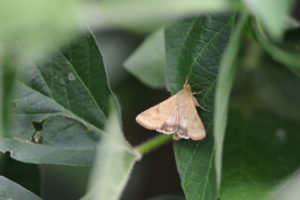
Two bits of information today tell me that we are likely beginning the main bollworm flight of the year. …

It has been a tough year for cotton across the state. As we move toward squaring and bloom stages, …

The 2020 crop is currently variable with some fields still struggling and lagging behind due to early-season stress (4-6 …

By Dominic Reisig and Anders Huseth With cotton moving into squaring it’s a good time to think about a game …

Hopefully you had the opportunity to purchase your dicamba products prior to reading this blog. If not, you may …
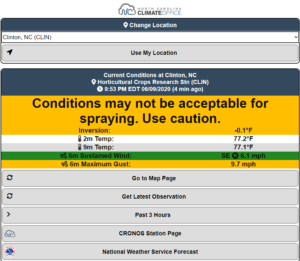
Remember to check out the new Spray Conditions Tool for NC ECONet before spraying dicamba products (Engenia, FeXapan, XtendiMax, …
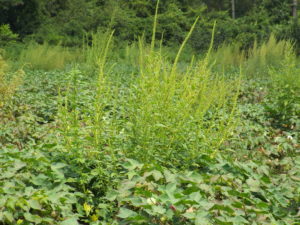
In response to the Ninth Circuit Court Appeals’ decision to vacate the registrations of Engenia, XtendiMax, and FeXapan, EPA …
This planting season has been frustrating to say the least. We had a 5-day stretch of good planting weather …

Unfortunately, last week’s rain proved too much for many cotton fields. For those pondering their replant options, here are …
There have been quite a few calls over the past few days from growers asking when they should consider …

Keith Edmisten, Professor of Crop Science & Soil Sciences and Extension Cotton Specialist Guy Collins, Extension Associate Professor – Cotton Soil …

According to the most recent Cotton Planting Conditions Forecast, planting conditions should improve by next Wednesday, May 13, 2020. …

Keith Edmisten, Professor of Crop Science & Soil Sciences and Extension Cotton Specialist Guy Collins, Extension Associate Professor – Cotton Soil …
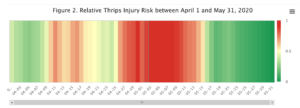
According to Dr. Edmisten and Collins, planting conditions might improve for safe planting around May 3. With planters rolling …

Keith Edmisten, Professor of Crop Science & Soil Sciences and Extension Cotton Specialist Guy Collins, Extension Associate Professor – Cotton Soil …
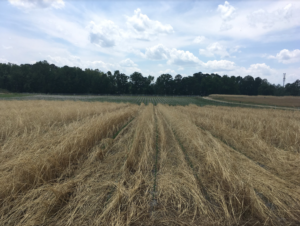
Cover crops are used by cotton and soybean farmers in North Carolina for a multitude of reasons. On-farm research …

This publication discusses flying unmanned aerial vehicles (drones, model aircraft) for commercial purposes. You'll learn …
Effective frost protection methods exist, however, each year, a portion of the state's fruit and …
This online publication describes how cover crops affect the soil, how to establish cover crops, …
This publication describes the major systems used in farm equipment and outlines basic maintenance procedures …
Before installing a dual-purpose subsurface drainage and subirrigation system on your farm, have your site …
This publication provides guidelines and recommendations for proper irrigation scheduling of wastewater.

This guide presents basic facts about seeds, including how they develop, how to store and …
Grapevines require 16 essential nutrients for normal growth and development (Table 9.1). Carbon, hydrogen, and …